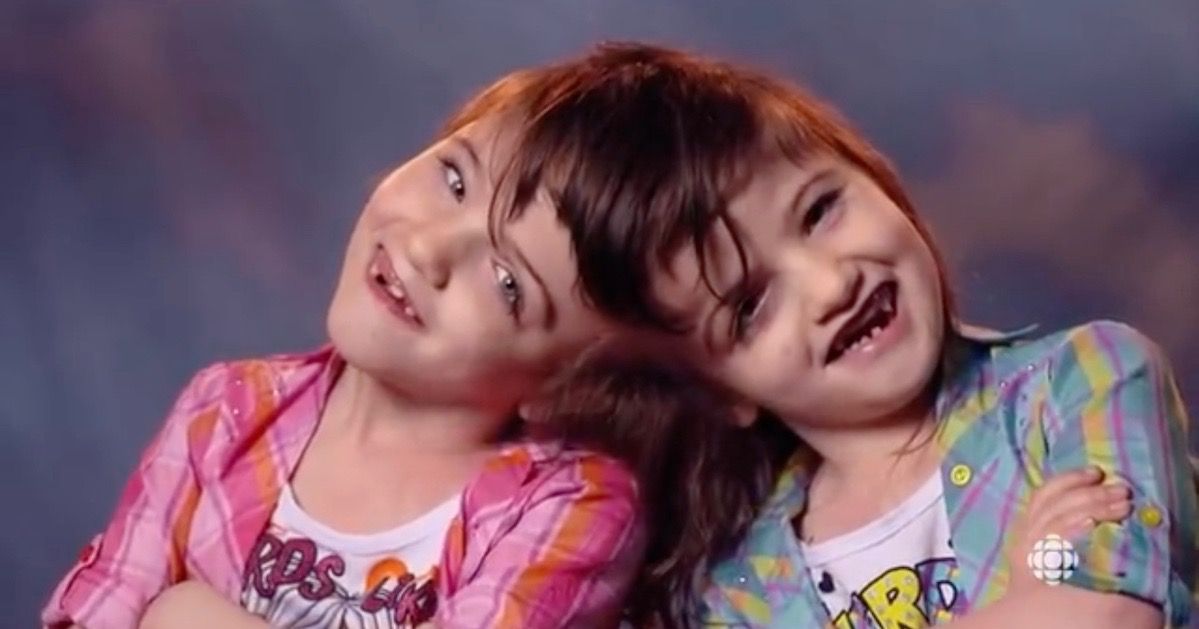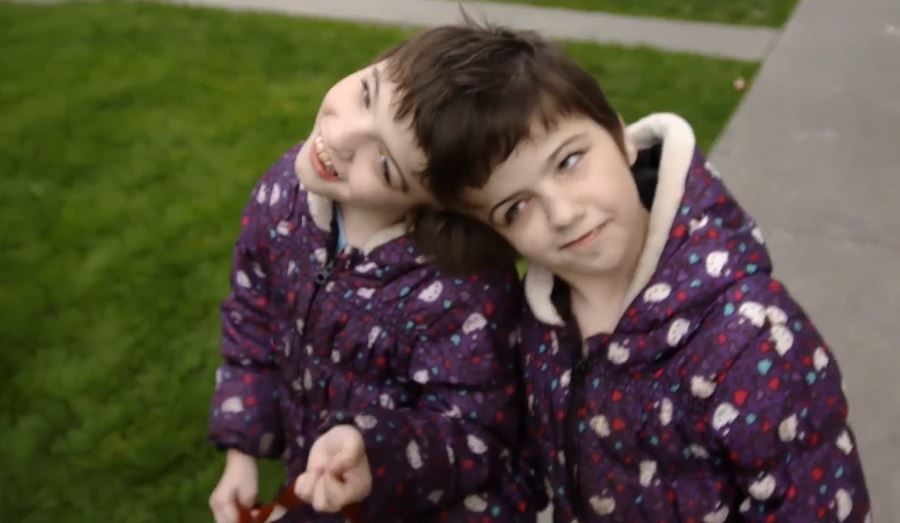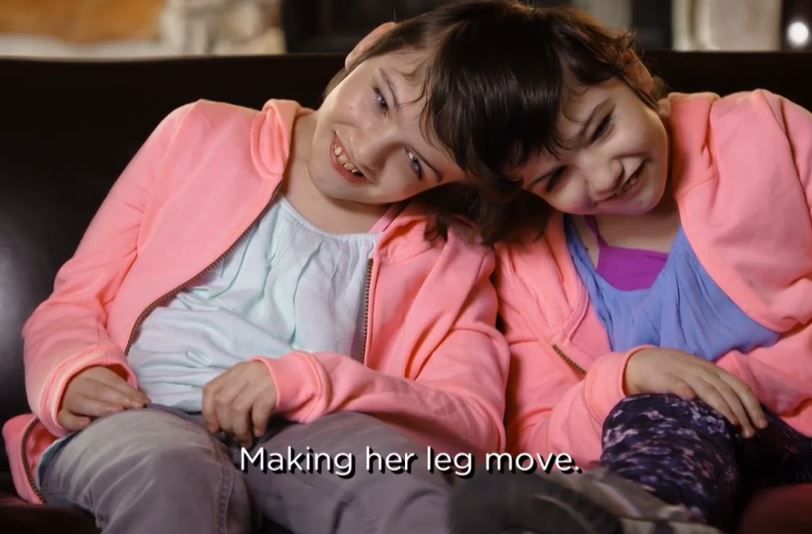You probably know a set of twins in your life. They're really not that uncommon. But what is uncommon is knowing conjoined twins. The occurrence of conjoined twins is estimated at one in 189,000 births, with half of those ending in stillbirth or death within 24 hours.
But Tatiana and Krista Hogan not only survived their low survival odds, they did it while being Craniopagus twins, the rarest form of conjoined twins.
Craniopagus twins means that the 11-year-old girls from British Columbia, Canada are joined at the head. The odds of this happening is one in 2.5 million, and generally survival is not expected to be longer than 24 hours.
The Hogan twins each have their own brain, but are connected by a thalamic bridge. The thalamus is essentially the control room for the brain. It relays messages about motor signals, sensory responses, and is what keeps the brain consciousness.
Though a lot of families consider separation for conjoined twins, CT scans revealed that Tatiana and Krista aren't candidates for this surgery without risking serious injury or death. A team of doctors was assembled for the birth of the Hogan twins, including neurosurgeon Doug Cochrane.
"At the time [they were born]," Dr. Cochrane said, "the immediate reaction to conjoined twins was, "˜gee whiz' you've got to get them separated. You've got to make them normal. They've got to fit our social context of what normality is. I became a member of one of the teams trying to support the family and learning with them. It's not my role to create injury for the sake of social conformity."
But being conjoined hasn't stopped these twins yet, and it doesn't seem like it will any time soon.
The duo may have their own bodies, but they share senses of taste, touch, and sight. Their mother, Felicia, had Krista close her eyes while she touched Tatiana on her face and knee. Krista was quickly able to tell where her sister was being touched, even without seeing it. The same thing happened when Felicia had Tatiana close her eyes and touched Krista.
"I could have never imagined they were going to do anything that they can do now," Felicia told CBC. "There's nobody in the world that's connected the same way that they are."
In addition to sharing a sense of touch and sight, the twins are also in control of each other's limbs.
"So Tatiana controls three arms and a leg, and Krista controls three legs and an arm," Felicia explained. "But it can be, kind of 'turned off' I guess you could say. Like they can choose when they do it and when they don't want to do it."
The most fascinating part about the Hogan twins is how they are able to hear each other's thoughts. They refer to it as "talking in our heads." Tatiana said she likes being attached to her sister "sometimes but not always" because "sometimes she's annoying."
Despite being conjoined, Tatiana and Krista attend a regular school. They both have developmental challenges, but are learning to read, write, and do math. They also know how to ride a bike, cross-country ski, and are even learning to swim as part of their physical therapy.
Though they appear to be living as normal 11-year-olds after beating the odds, Tatiana and Krista still have a fair share of medical issues to deal with. They are diabetic and have epilepsy, and are required to take a regimen of pills every day. They also require blood tests and daily insulin injections.
"The girls are still such an unknown," Felicia admits. "We're just going to take it one day at a time.
[H/T: CBC, Ottawa Citizen]







